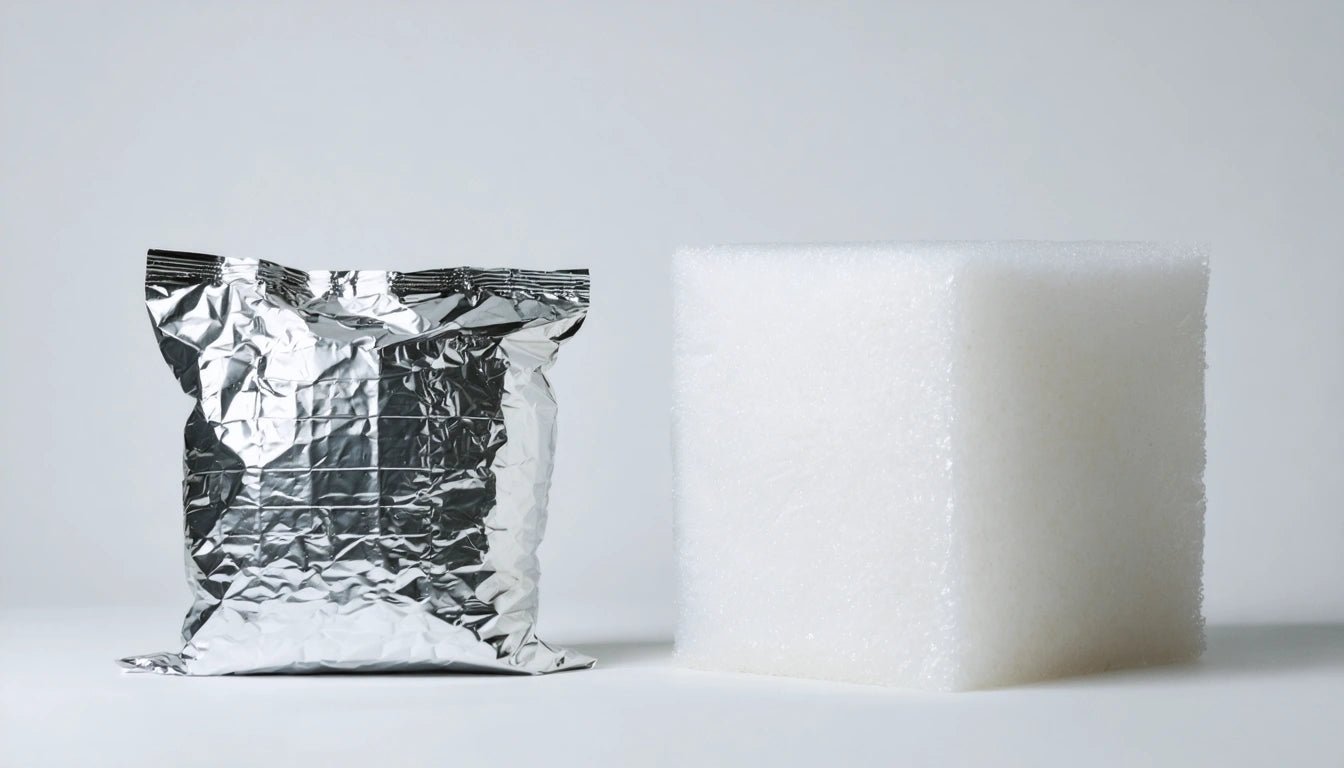Table of Contents
Silver Mylar Bag Insulation vs Foam: Packaging Protection Guide
Effective insulation is crucial for maintaining product integrity during storage and shipping. When comparing silver mylar bag insulation vs foam, businesses must consider thermal properties, shock absorption, cost-effectiveness, and environmental impact. This guide examines both options to help you make informed packaging decisions for temperature-sensitive and fragile products.
Understanding Packaging Insulation Needs
Before selecting between silver mylar bag insulation or various types of packaging foam, it's essential to understand your specific requirements. Different products demand different protective properties:
- Temperature control for perishables or temperature-sensitive items
- Shock absorption for fragile products
- Moisture resistance for items vulnerable to humidity
- Cost-effectiveness for high-volume shipping
- Sustainability for environmentally conscious brands
According to packaging innovation research, the right insulation choice can significantly impact product quality upon arrival and overall customer satisfaction.
Silver Mylar Bag Insulation Properties
Silver mylar bags consist of polyester film coated with aluminum, creating a reflective barrier that excels at temperature regulation. These properties make mylar particularly valuable for specific applications:
- Excellent thermal reflection, redirecting up to 95% of radiant heat
- Lightweight and flexible, reducing shipping costs
- Moisture-resistant barrier protection
- Space-efficient storage before use
- Customizable sizing for various products
Mylar insulation is commonly used in food delivery, pharmaceutical shipping, and cannabis product packaging where temperature control is critical. For specialized applications like cannabis pre-rolls, protective blister packaging solutions often incorporate mylar elements to maintain product freshness and prevent damage during distribution.
Types of Foam for Packaging
The packaging industry utilizes several types of foam, each with distinct characteristics suited to different applications. Understanding these variations helps in selecting the appropriate foam for specific packaging needs.
Expanded Polystyrene (EPS)
EPS, commonly known as Styrofoam, remains one of the most widely used types of packaging foam due to its versatility:
- Excellent thermal insulation properties
- Lightweight yet rigid structure
- Superior shock absorption
- Cost-effective for many applications
- Customizable into molded shapes for specific products
However, EPS presents environmental challenges as it's not biodegradable and difficult to recycle in many regions, which has led to increased focus on sustainable alternatives.
Polyethylene (PE) Foam
PE foam offers versatility across multiple packaging applications:
- Non-abrasive surface ideal for delicate items
- Excellent water resistance
- Available in various densities for different protection levels
- More recyclable than EPS
- Flexible and easily customizable
This foam type is frequently used in electronics packaging, furniture protection, and as liner material in rigid containers.
Polyurethane (PU) Foam
PU foam provides premium protection with specialized characteristics:
- Superior cushioning properties
- Excellent memory and recovery after compression
- High durability for repeated use
- Available in varying firmness levels
- Effective sound dampening properties
While offering excellent protection, PU foam typically comes at a higher price point than other foam options.
Comparative Analysis: Mylar vs Foam
When evaluating silver mylar bag insulation vs foam for your packaging needs, consider these comparative factors:
| Factor | Silver Mylar | Packaging Foam |
|---|---|---|
| Thermal Insulation | Reflects radiant heat, excellent for short-term temperature maintenance | Provides direct thermal barrier, better for extended periods |
| Shock Absorption | Minimal protection against impact | Superior cushioning and impact resistance |
| Space Efficiency | Highly compact when not in use | Bulkier, requires more storage space |
| Cost | Generally lower per-unit cost | Higher initial investment, especially for custom molds |
| Versatility | Limited to specific applications | Adaptable to various product shapes and needs |
As outlined in comprehensive packaging material guides, many businesses implement hybrid solutions that leverage the strengths of both materials.
Sustainability Considerations
Environmental impact has become increasingly important in packaging decisions:
- Silver mylar bags are typically not biodegradable but can be recycled in facilities equipped to handle mixed materials
- Traditional EPS foam presents significant environmental challenges with limited recycling options
- Newer biobased foams offer improved sustainability profiles
- PE foam is more readily recyclable than many alternatives
- Reusable insulation solutions reduce overall environmental impact
Industry trends show increasing consumer preference for brands that prioritize sustainable packaging solutions, making this an important consideration beyond mere functionality.
Selecting the Right Insulation for Your Products
The optimal choice between silver mylar bag insulation and various types of packaging foam depends on your specific product requirements, shipping conditions, and business priorities. Consider implementing these strategies:
- Conduct temperature testing with both materials under actual shipping conditions
- Calculate the total cost including material, storage, and potential product loss
- Consider hybrid solutions that combine mylar and foam for maximum protection
- Evaluate the environmental impact aligned with your brand values
- Seek feedback from customers about packaging performance
For specialized products requiring both temperature control and physical protection, many businesses are developing custom solutions that incorporate elements of both materials. This approach, as referenced in packaging composition studies, often yields the best results for challenging shipping scenarios.
By thoroughly evaluating your specific needs against the properties of both silver mylar bag insulation and various types of packaging foam, you can develop an optimal protection strategy that balances performance, cost, and sustainability for your products.
", "tags": "packaging, sustainability, informational, business tips" }


















